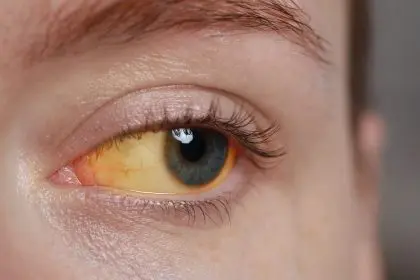The human body produces hundreds of different chemical compounds that can be detected through breath analysis. These compounds originate from various metabolic processes throughout your organs and systems, making breath a surprisingly accurate diagnostic tool for identifying health problems.
Modern medical technology has advanced to the point where breath analysis can detect certain diseases with remarkable accuracy. However, you don’t need sophisticated equipment to recognize many of the warning signs your breath provides about your overall health status.
Understanding what different
odors indicate can help you identify potential health issues early, when they’re most treatable. More importantly, recognizing these patterns can prompt timely medical attention that could prevent serious complications or save your life.
The connection between breath and health extends far beyond the mouth, involving complex interactions between your respiratory system, digestive tract, metabolic processes, and even psychological state. Each of these systems contributes distinct chemical signatures that trained professionals can interpret to assess your health.
Sweet or fruity breath warns of blood sugar crisis
One of the most medically significant breath odors is a sweet, fruity scent that resembles acetone or nail polish remover. This distinctive smell indicates the presence of ketones in your breath, which signals that your body is breaking down fat for energy instead of using glucose normally.
This metabolic shift occurs most commonly in people with uncontrolled diabetes, particularly Type 1 diabetes, though it can also affect those with Type 2 diabetes during periods of severe blood sugar elevation. When blood glucose levels become dangerously high, the body begins burning fat stores for energy, producing ketones as waste products.
Ketones accumulate in the bloodstream and are eventually expelled through breathing, creating the characteristic sweet or fruity odor. This condition, known as diabetic ketoacidosis, represents a medical emergency that requires immediate treatment to prevent coma or death.
The fruity breath odor often appears alongside other warning signs like excessive thirst, frequent urination, nausea, vomiting, and confusion. However, breath changes may be the first noticeable symptom, making it particularly important for people with diabetes risk factors to pay attention to unusual breath odors.
Even people without diagnosed diabetes can develop ketotic breath during periods of extreme dieting, fasting, or carbohydrate restriction. While less dangerous than diabetic ketoacidosis, this still indicates metabolic stress that should be addressed through dietary modifications.
The intensity of the fruity breath odor often correlates with the severity of the metabolic disturbance. Mild ketosis may produce barely detectable changes, while severe cases create breath so sweet that others notice it from several feet away.
Fishy breath reveals kidney dysfunction
A fishy or ammonia-like breath odor indicates that your kidneys may be struggling to filter waste products effectively from your bloodstream. This distinctive smell results from the accumulation of nitrogen-containing compounds that healthy kidneys would normally remove through urine production.
When kidney function declines, these waste products build up in the blood and are eventually expelled through the lungs, creating breath that smells fishy, metallic, or like cleaning ammonia. This symptom often appears in the later stages of kidney disease, when organ function has become significantly compromised.
The fishy breath associated with kidney problems typically persists throughout the day and doesn’t improve with tooth brushing, mouthwash, or dietary changes. This consistency distinguishes it from temporary breath odors caused by food or poor oral hygiene.
Kidney-related breath changes may be accompanied by other symptoms like fatigue, swelling in the legs or face, changes in urination patterns, and persistent itching. However, breath odor changes can sometimes appear before these more obvious symptoms become noticeable.
People with diabetes, high blood pressure, or family histories of kidney disease should be particularly alert to fishy breath odors, as these conditions significantly increase kidney disease risk. Early detection through breath changes could lead to treatments that slow or prevent further kidney damage.
The metallic component of kidney-related breath often becomes more pronounced as the condition progresses. Some people describe the taste as similar to having coins in their mouth, reflecting the chemical changes occurring in their blood chemistry.
Musty breath signals liver trouble
Liver dysfunction produces a distinctive musty, sweet breath odor that some describe as smelling like a combination of garlic and rotten eggs. This unique scent results from the liver’s inability to properly process sulfur-containing compounds, which then accumulate and are expelled through breathing.
The liver plays a crucial role in filtering toxins and metabolizing various compounds throughout the body. When liver function becomes impaired due to disease, infection, or damage, these normal processing functions become compromised, leading to the buildup of aromatic compounds in the bloodstream.
Hepatitis, cirrhosis, liver cancer, and other serious liver conditions can all produce characteristic breath changes. The musty odor typically appears when liver damage has become substantial, though it may be one of the earlier noticeable symptoms in some cases.
Liver-related breath changes often fluctuate throughout the day, becoming more pronounced during periods when the liver is under additional stress, such as after meals or alcohol consumption. The odor may also intensify during illness or when taking medications that require liver processing.
People with risk factors for liver disease, including heavy alcohol use, viral hepatitis exposure, or family history of liver problems, should pay particular attention to unusual breath odors. Early detection of liver dysfunction can significantly improve treatment outcomes and prevent life-threatening complications.
The breath changes associated with liver problems may be subtle initially, requiring close attention to detect. However, as liver function continues to decline, the musty odor typically becomes more pronounced and persistent.
Sour breath points to digestive disorders
Persistent sour or acidic breath odor often indicates digestive system problems, particularly those involving acid reflux, stomach infections, or intestinal bacterial overgrowth. This type of breath results from stomach acids or bacterial fermentation products being expelled through the respiratory system.
Gastroesophageal reflux disease causes stomach acid to back up into the esophagus and throat, where it can be detected as sour breath. This condition affects millions of people and can cause breath changes even when other symptoms like heartburn aren’t obvious.
Helicobacter pylori infections in the stomach create distinctive breath odors due to the waste products produced by these bacteria. This common infection can lead to ulcers and other serious digestive problems if left untreated, making breath changes an important early warning sign.
Small intestinal bacterial overgrowth produces various volatile compounds that can be detected through breath analysis. This condition occurs when bacteria normally found in the large intestine colonize the small intestine, disrupting normal digestion and creating characteristic breath odors.
The sour breath associated with digestive problems typically worsens after meals, particularly those high in fat or spices. The timing of these breath changes can provide important clues about the underlying digestive dysfunction.
Chronic digestive disorders often produce breath changes that persist despite good oral hygiene practices. This consistency helps distinguish digestive-related breath problems from those originating in the mouth or throat.
Metallic breath warns of blood and circulation issues
A metallic taste and breath odor can indicate various blood-related health problems, from minor issues like bleeding gums to more serious conditions affecting blood chemistry or circulation. This distinctive taste often results from iron compounds or other metals present in increased concentrations in the bloodstream.
Internal bleeding anywhere in the digestive tract can produce metallic breath as blood is broken down and its components are absorbed into the bloodstream. Even small amounts of chronic bleeding can create detectable changes in breath chemistry over time.
Certain medications, particularly those containing iron or other metals, can create metallic breath as side effects. Blood pressure medications, antibiotics, and chemotherapy drugs are among the treatments that commonly cause these taste and breath changes.
Kidney disease, liver dysfunction, and certain autoimmune conditions can all alter blood chemistry in ways that produce metallic breath. These systemic diseases change the concentration of various compounds in the bloodstream, some of which are detectable through breath analysis.
Dental problems like severe gum disease or tooth infections can also cause metallic breath, though this is typically accompanied by obvious oral symptoms like pain, swelling, or visible infection signs.
The intensity of metallic breath often correlates with the severity of the underlying condition. Mild cases may produce only occasional metallic tastes, while more serious problems create persistent, pronounced metallic breath that others can detect.
Chemical breath indicates toxic exposure
Unusual chemical odors on the breath can signal exposure to toxic substances or the presence of harmful compounds in the body. These odors may result from occupational exposures, accidental poisoning, or the body’s attempts to eliminate dangerous chemicals.
Acetone breath, beyond its association with diabetes, can indicate exposure to industrial solvents or chemicals. People working in certain industries or those exposed to household chemicals may develop detectable breath changes as their bodies process and eliminate these compounds.
Paint thinner, gasoline, or other petroleum-based chemical odors on the breath suggest significant exposure that could pose serious health risks. These exposures can occur through inhalation, skin contact, or accidental ingestion of contaminated substances.
Medication reactions or overdoses sometimes produce distinctive chemical breath odors as the body attempts to eliminate excess drugs or their metabolic byproducts. This can occur with both prescription and over-the-counter medications when taken in excessive amounts.
Carbon monoxide exposure, while often odorless during exposure, can sometimes produce subtle breath changes as the body processes this dangerous gas. However, carbon monoxide poisoning typically produces other symptoms that are more obvious and require immediate medical attention.
The persistence of chemical breath odors often indicates ongoing exposure or the body’s continued attempts to eliminate stored toxins. Identifying and eliminating the source of exposure is crucial for preventing serious health consequences.
Breath patterns reveal respiratory health
Beyond specific odors, breathing patterns and breath characteristics provide important information about respiratory system health. Changes in breath rate, depth, or effort can indicate developing lung problems or other respiratory conditions.
Shallow, rapid breathing may indicate lung inflammation, infection, or reduced lung capacity from various causes. These breathing pattern changes often appear before obvious symptoms like coughing or chest pain develop.
Breath that smells stale or infected suggests possible lung infections, bronchitis, or other respiratory tract problems. The distinctive odor of infected breath results from bacterial growth in the respiratory system and the waste products these organisms produce.
Wheezing or whistling sounds during breathing indicate airway narrowing that could result from asthma, allergies, or other respiratory conditions. These sound changes may be subtle initially but typically worsen over time without appropriate treatment.
The effort required for normal breathing provides important clues about lung function. Increased breathing effort during routine activities suggests declining respiratory capacity that warrants medical evaluation.
Chronic coughing that produces unusual breath odors may indicate lung infections, inflammation, or other serious respiratory problems requiring professional medical assessment and treatment.
When breath changes demand immediate attention
Certain breath changes require immediate medical attention due to their association with life-threatening conditions. Recognizing these emergency situations can be crucial for preventing serious complications or death.
Sudden onset of fruity breath in people with diabetes or diabetes risk factors indicates possible diabetic ketoacidosis, a medical emergency requiring immediate hospital treatment. This condition can progress rapidly and become fatal without prompt intervention.
Severe ammonia or fish-like breath may indicate acute kidney failure, particularly when accompanied by reduced urination, swelling, or confusion. This condition requires emergency medical care to prevent permanent kidney damage or death.
Any sudden change in breath odor accompanied by confusion, difficulty breathing, chest pain, or loss of consciousness warrants immediate emergency medical attention regardless of the specific smell involved.
Chemical breath odors following known or suspected toxic exposures require prompt medical evaluation to assess the extent of poisoning and initiate appropriate treatment measures.
Progressive worsening of any unusual breath odor, particularly when accompanied by other concerning symptoms, should prompt urgent medical consultation to identify and treat underlying conditions before they become more serious.
The key to using breath changes as health indicators lies in paying attention to patterns, persistence, and associated symptoms. While isolated incidents of unusual breath may not be concerning, persistent changes or those accompanied by other health problems warrant professional medical evaluation to identify and address underlying causes effectively.














